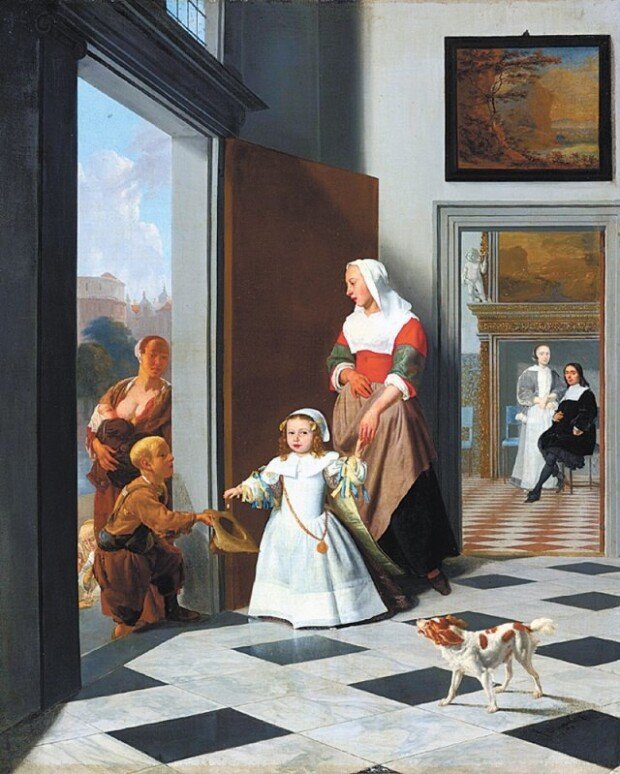Virtues of the nobility
Virtues of the nobility
Posted October. 20, 2022 07:54,
Updated October. 20, 2022 07:54

The word “charity” not only refers to voluntary giving of help or organization to help those in need but also tolerance. In the Netherlands, helping those in need has been traditionally valued in society. This painting by Jacob Ochtervert reflects the virtues of an upper-class Dutch family in the 16th century.
A child from a wealthy family holding his nanny’s hand in front of a large and elegant house hands change to a homeless family. The child wearing an ironed white dress appears like a girl but is a boy. Back then, boys used to dress like girls up to the age of seven. The homeless boy in ragged clothing steps inward and hands out his hat to receive the coin.
What is interesting is what the characters in the painting are gazing at. The homeless boy gazes at the wealthy boy, and the mother of the homeless boy, holding a baby in her arms, looks at her son sorrowfully. No mother in the world wishes to see her boy panhandling, but she seems to have no choice. The wealthy boy gazes beyond the painting as if to say, “I am helping out the poor.” Meanwhile, the parents of the wealthy boy, standing in the back of the living room, are also gazing straightforwardly as if to say they have taught their child well. The dog in the lower right is a witness to the scene.
Ochtervert, who comes from Rotterdam, created many paintings throughout his life depicting the everyday lives of the upper class. Not only did he depict the physical appearance of the people, but he also drew scenes reflecting the interaction of people in the different social classes to convey moral lessons.
The Dutch artist created paintings for the upper class, but he sympathized with the poor. The warm gaze of the nanny opening the front door widely, welcoming the homeless family with sympathy, may reflect the empathy of the painter himself.







